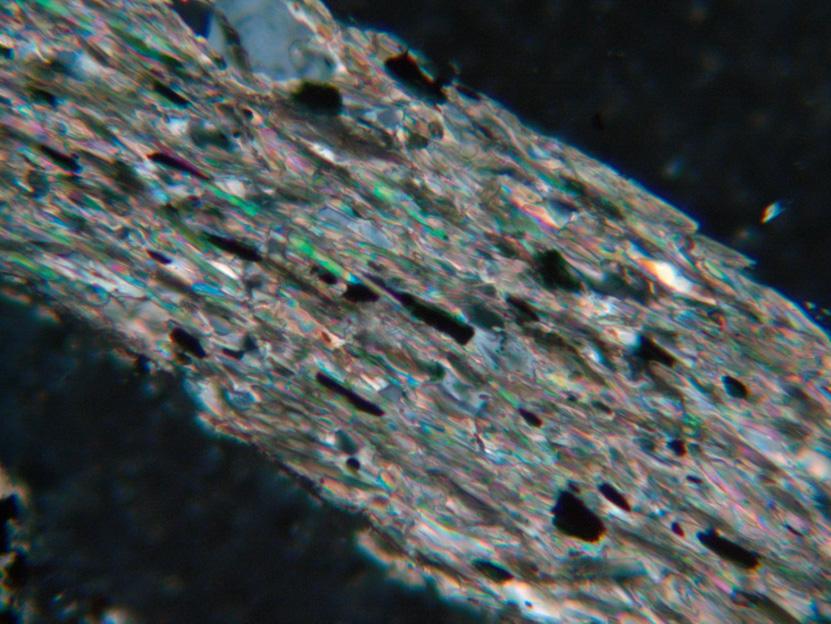This rock photo, taken by David Valentio using a microscope, offers field of view around 5 millimeters from 9675 feet in the earth from the Cornell University's deep geothermal borehole. Bright colors indicate large amount of mica in the rock. Valentino recently presented on a major discovery from the site that redefines the geological and tectonic history within New York state and the eastern U.S.
A geology professor from SUNY Oswego recently presented a major discovery that redefined the geological and tectonic history within New York State and the eastern U.S.
David Valentino, a professor in the university’s Department of Atmospheric and Geological Sciences, traveled to Pittsburgh for the National Geological Society of America conference and presented research on the discoveries made at the bottom of the Cornell Earth Source Heat deep geothermal borehole, nearly 2 miles deep.
The big discovery involved finding a new sedimentary basin in addition to evidence for an entirely new tectonic event that is preserved beneath New York State. This basin is more than 600 million years old and formed when the ancient supercontinent of Rodinia rifted apart.
Valentino said that the geology at the bottom of the borehole was a total surprise.
“We have a very good understanding of what’s at depth under New York state, under most of the state, and it’s rare that you would have a situation where we would not generally know what we would encounter at that depth,” Valentino said. “But every now and then, you get surprises.”
Exploratory experiment
“The Cornell Borehole project is an exploratory well that was drilled on the campus at Cornell University for the purpose of developing [a] deep geothermal energy source,” Valentino said. “Cornell University has a plan to go green or renewable energy within the next decade and a half.”
For geothermal energy extraction, the process works by injecting water deep into the ground, where it warms, and finally pumped to the surface where the thermal energy can be used for heating buildings. For example, the Richard S. Shineman Center is heated and cooled via the geothermal well field located beneath the commuter lot south of the building, while the current renovations for Hewitt Hall included implementing a geothermal well system under the Hart/Funnelle lot.
“This particular project, it’s experimental,” Valentino said of the Cornell site. “It’s not the first deep hole being drilled. There’s plenty of deep holes in New York state, and some even deeper than this one, but it’s the first deep hole that’s being drilled in this type of geological setting for geothermal purposes.”
Valentino described the experimental well as a first of its kind.
“When I say it’s the first of its kind, it’s not the first deep geothermal borehole, but it’s the first, we’d say unconventional,” Dr. Valentino said. “There’s not some anomalously hot part of the earth where it’s being drilled deeply.”
In this project, Valentino said that his role has been examining 300 feet of rock at the bottom of the borehole drilled to a total depth of 9,790 feet. Valentino also said that the timeframe for developing deep geothermal energy will be years, and that its feasibility is being tested.
Valentino previously presented his research at the Central New York Association of Professional Geologists meeting in Syracuse.
The research is a collaboration with Teresa Jordan of Cornell University, Jeffrey Chiarenzelli of St. Lawrence University, Robert Jacobi of the University at Buffalo, and Alexander Gates of Rutgers University.
-- Written by Ryan Ravenell of the Class of 2024




